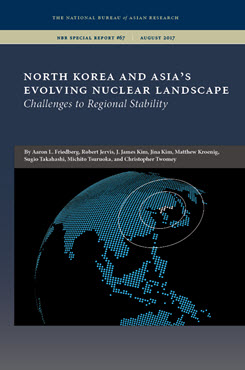The Asian Nuclear System in Comparative and Theoretical Context
This essay argues that the second nuclear age in Asia is likely to be highly dangerous and unstable based on lessons from history and implications from theory.
EXECUTIVE SUMMARY
This essay argues that the second nuclear age in Asia is likely to be highly dangerous and unstable based on lessons from history and implications from theory.
MAIN ARGUMENT
There are theoretical grounds for deep concerns about the nuclear arena in Asia that are borne out in preliminary evaluation of current events. What is often referred to as a second nuclear age poses many dangers in this region in particular. Some of these concerns stem from a deeper understanding of the sources of instability from the Cold War: major conflicts of interest, intense conventional rivalries, and manipulations of risk and competitions in resolve. Others draw on international relations theory to identify sources of conflict and uncertainty. Thus, traditional concerns about the dangers of multipolarity have analogues today, as does the increasing complexity in the strategic realm with the development of a wide range of new “strategic” capabilities. Today, the question of what constitutes a strategic escalation is much less clear than in the past. These problems, endemic to the contemporary global order, are particularly prominent in Asia. Intense conventional rivalries exist in a number of areas, often the product of repeated wars and militarized crises. Several states are engaging in the same sort of dangerous coercive diplomacy that was riskiest during the Cold War. States interact in polygonal relationships rather than dyadic ones (e.g., U.S.-China-Russia, India-Pakistan-China, and U.S.–China–North Korea triangles). These trends make Asia likely to be a dangerous region, and one not easily pacified by international diplomacy. Rather, tacit restraint and conservative foreign policy goals are warranted.
POLICY IMPLICATIONS
- The outlook for Asia’s nuclear future is very negative, even in the absence of specific assertive policies by China or other countries.
- Additional efforts should be made to educate the region regarding current trends in Asia to reduce unintentional spirals.
- The U.S. should be cautious and conservative in pursuit of its regional foreign policy goals, recognizing that multipolar nuclear spirals have the potential to raise great costs.
Christopher Twomey is an Associate Professor of National Security Affairs at the Naval Postgraduate School in Monterey, California.
NOTE: The author has benefited from feedback on the ideas presented in this essay from audiences at various NBR events, at the Lawrence Livermore National Laboratory, and at the American Political Science Association. Matthew Kroenig also provided valuable comments on this specific essay. This essay represents the author’s personal views and does not necessarily represent the views of any part of the U.S. government.


